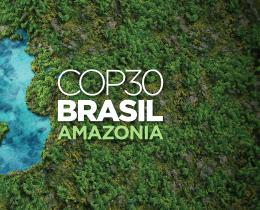If you’re interested in lessening your environmental impact, knowing where to begin can feel overwhelming. Over the past several years, countless lists of steps to take and green product comparisons have been published. Now, recent research has found that there is a way to simplify your approach by focusing on just three items: food waste, diet, and electricity.
1. Reduce Food Waste
Did you know that roughly a third of the world’s food is never eaten? The food we waste is responsible for roughly 8 percent of global emissions, according to Project Drawdown, a nonprofit that seeks to help the world reach “drawdown”—a time when levels of greenhouse gases start to decline steadily.
That means the land and resources used—including seeds, water, energy, land, fertilizer, hours of labor, plus financial capital—were unnecessary. Not only that; producing uneaten food generates greenhouse gas at every stage. When organic matter decomposes in the landfill in the absence of oxygen, it produces methane, which is up to 34 times more powerful at trapping heat in the atmosphere than carbon dioxide over a century.
Both High- and Low-Income Countries: Food waste is an issue everywhere; in both high- and low-income countries. Drawdown data show that up to 35 percent of food in high-income economies is thrown out by consumers or retailers who either reject food based on bumps and bruises, or simply buy and serve too much. In low-income economies, there’s little waste at the household level, but food rots on farms or spoils during storage or distribution.
Food Waste Solutions: There are numerous ways to address food waste. In lower-income countries, improving infrastructure for storage, processing, and transportation is essential. In higher-income countries, there is a multitude of ways to reduce food waste today, such as:
- Eat what you buy: Buy only what you eat, and eat what you buy. You can often find a discount on imperfect fruit that would otherwise be thrown away.
- Plan meals in advance: By planning meals, you’ll eat better, have much less food waste, and a simpler time shopping for groceries.
- Organize your fridge: After a good cleaning, start to store meat and fish on the bottom shelf, veggies in the high-humidity drawer, and leftovers on the top labeled with dates.
- Learn new cooking skills: Learn how to can or freeze food, or make meals with what’s available on the shelf.
- Start composting: People have long used compost to feed gardens, as they reduce waste. Build that backyard compost bin, invest in a countertop variety, or put a call into your local curbside compost company. Rather than generating methane, composting converts organic material into stable soil carbon, while retaining water and nutrients of the original waste matter. The result is carbon sequestration as well as production of a valuable fertilizer.
- Donate food: If you still have excess, look for a local food pantry to donate it to, or prepare a meal for a neighbor.
National food-waste targets and policies also help push the needle. The state of California, for instance, passed a law that all of its cities must develop a plan for curbside pickup of food scraps for composting.
The Impact: Project Drawdown estimates that if 50–75 percent of food waste is reduced by 2050, avoided emissions could be equal to 13.6–26.0 gigatons of carbon dioxide.
2. Improve Your Diet
For many of us, what we eat is dictated by habit, tradition, and what’s easily available and affordable around us. Nevertheless, if you want to reduce your carbon footprint, altering your diet can have a big impact. Zen master Thich Nhat Hanh said making the transition to a plant-based diet may be the most effective way an individual can stop climate change.
The Plant-Based Diet: Shifting to a mostly plant-based diet is a solution to global warming that runs counter to the meat-centric Western diet. Yet, if the world’s cattle were their own nation, they would be the world’s third-largest emitter of greenhouse gases. It turns out, eating lower on the food chain reduces farming inputs, land-clearing, fertilizer use, and greenhouse gas emissions.
Plant-rich diets also tend to be healthier, leading to lower rates of chronic disease. According to a 2016 study, business-as-usual emissions could be reduced by as much as 70 percent through adopting a vegan diet and 63 percent for a vegetarian diet.
The Omnivore Diet: Of course, you have to listen to your body and your heart in determining your ideal diet. If you aren’t ready to, or can’t adopt a plant-based diet, you can start by cutting back on the amount of meat you eat.
You might adopt a single day of the week not to eat meat, or cut out meat for a meal or two each day. If you find that easy to do, then you might take it another step to eating meat only on holidays, special occasions, or weekends.
The Impact: Using data from the Food and Agriculture Organization of the United Nations, if 50 to 75 percent of the world’s population restricts their diet to 2,250 calories per day and reduces meat consumption, Project Drawdown estimated that at least between 43 and 68 gigatons of emissions could be avoided. If a reduction of deforestation from land-use change is included, an additional 21.8 to 23.5 gigatons of emissions could be avoided, making healthy, plant-rich diets one of the most impactful solutions.
3. Use Efficient Electricity Options
Your electricity usage is a considerable part of your overall environmental impact. Fortunately, solar photovoltaic has become more affordable and accessible to consumers in recent years. But even if you’re not ready to own or lease solar panels for your rooftop, you can easily choose where your electricity comes from.
Choosing Solar Generation: Since 2014, the average cost of solar PV panels has dropped nearly 70%. Markets for solar energy are maturing rapidly around the country since the price of solar electricity is now competitive, and the value of the US solar market in 2021 was $32.9 billion. Solar panels can be installed on rooftops with essentially no land-use impacts, and it is projected that more than one in seven US homes will have a rooftop solar PV system by 2030.
Mandatory vs. Voluntary Renewable Electricity: The US renewable electricity market is comprised of two types of buyers: those who are required to purchase renewable electricity and those who voluntarily purchase it.
Mandatory markets exist because of policy decisions, such as state renewable portfolio standards, which require electric service providers to have a minimum amount of renewable energy in their electricity supply. If this is the case in your state, the electricity service providers use renewable energy certificates (RECs) to demonstrate compliance.
Voluntary markets, also referred to as “green power markets,” are driven by consumer demand for certain types of renewable energy. Voluntary markets allow a consumer to procure renewable electricity at levels above and beyond what mandatory policy decisions require.
Regardless of the specific energy mix of your state—how much energy comes from coal, natural gas, hydropower, nuclear, etc.—switching to a green power program that draws only from renewable sources is one of the strongest ways you can personally take a stand for renewable energy.
How a Green Power Program Works: If you choose to purchase green power, you can get it from a local distribution utility, from competitive power suppliers, or directly from a renewable energy generator, depending on your state. Even in states where there are no green power retail suppliers and the utilities do not offer a green power option, anyone can buy RECs as a stand-alone product.
Typically, you pay a small surcharge to ensure that all of the electricity you use comes from a renewable source. All electricity, regardless of how it was generated, gets fed into the same grid, so you won't necessarily be receiving energy from renewable sources alone. Rather, you’re paying for a certain amount of electricity generated in a renewable energy project (or projects).
How to Find a Green Power Program: Whether you own your home or rent, you can sign up for a green power program with your utility. They are available in most places and you can view a listing of all current green power programs at the Department of Energy.
The Impact: How much your footprint gets reduced will vary from place to place. In states where the electricity mix is nearly entirely hydropower, the environmental footprint impact is much less than in places where coal is the primary way that electricity is created. In those places, switching to all renewables has a particularly large effect.
The majority of coal production is contained in a handful of states, such as West Virginia, where 89 percent of electricity comes from highly polluting coal.



